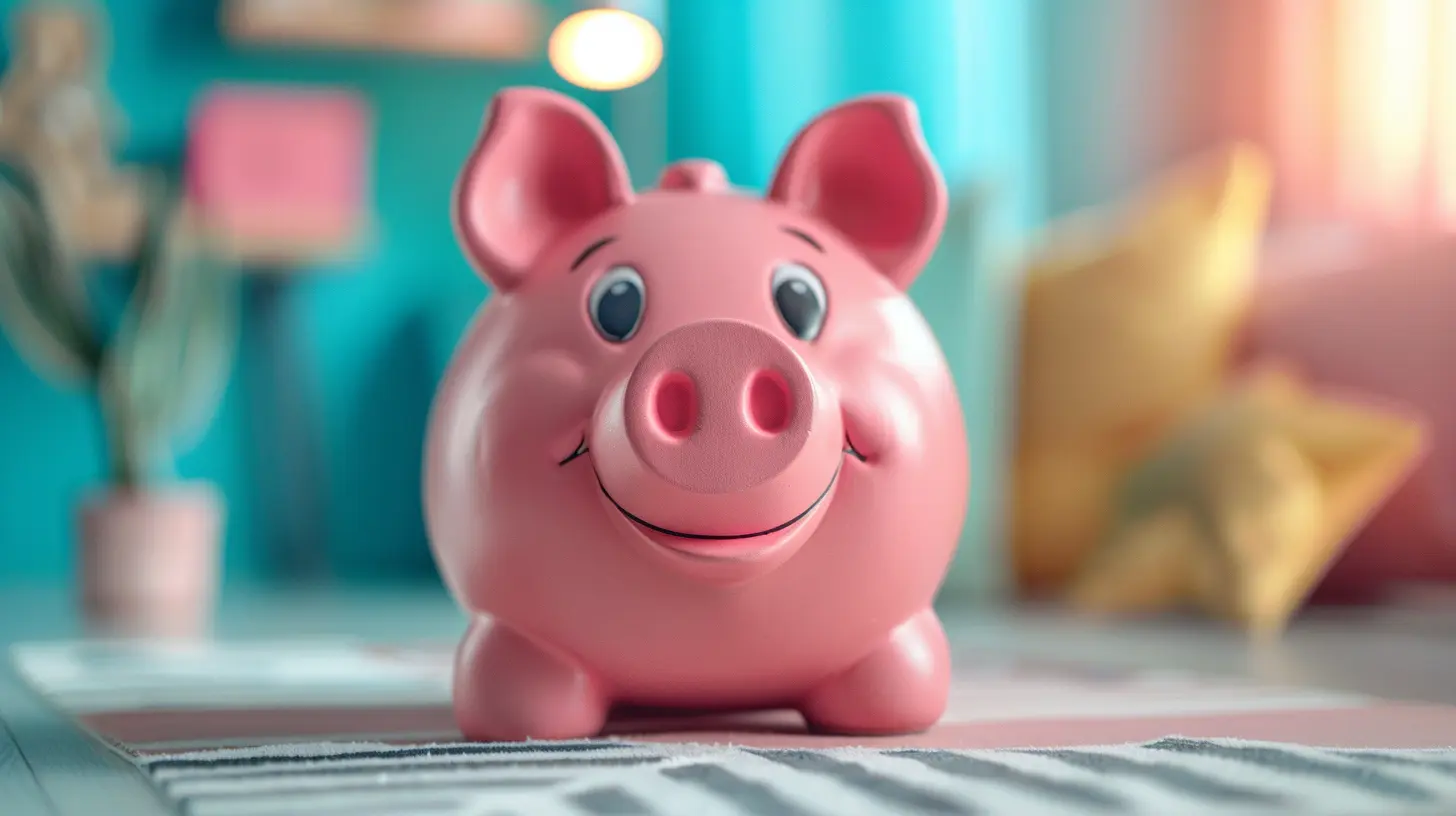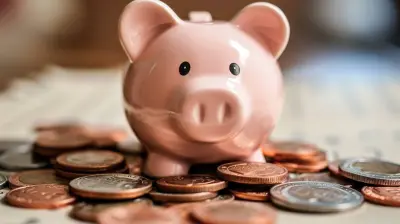How to Build a Debt-Repayment Plan That Sticks
6 June 2025
Let’s face it—debt feels like dragging a heavy anchor behind you every time you try to swim forward in life. Whether it’s credit cards, student loans, or car payments, when debt starts stacking up, it can feel downright overwhelming. But here's the good news: You don’t have to stay stuck. The key to financial freedom? A solid, personalized debt-repayment plan that actually works—and sticks.
In this guide, I’ll walk you through how to build a debt-repayment plan that fits your lifestyle, keeps you motivated, and helps you kiss your debt goodbye for good.
Why Most Debt Repayment Plans Fail
Before we dive into the "how," let’s talk about the "why." Why do so many people create repayment plans only to abandon them a few months later?Here are some usual suspects:
- Unrealistic expectations: People try to pay off too much too fast and burn out.
- Lack of motivation: Without seeing quick wins, it’s easy to feel like it’s not worth it.
- No budget: If you don’t know where your money is going, your plan won’t stand a chance.
- Life happens: Emergencies, job loss, surprise expenses—you name it.
But none of these things mean you're doomed. You just need the right strategy.
Step 1: Face the Numbers (Yes, All of Them)
Okay, time to rip off the Band-Aid. The first step in building a debt-repayment plan is knowing exactly what you’re dealing with. It may not be fun, but it’s essential.Here’s what you need to gather:
- The total amount you owe
- Minimum monthly payments
- Interest rates
- Due dates
Use a spreadsheet, an app, or even pen and paper—whatever helps you see the full picture. Once it’s all laid out in front of you, you’ll have a much better idea of how to move forward.
Pro Tip: Try organizing your debts from smallest to largest or by interest rate. This will come in handy later.
Step 2: Set Clear, Achievable Goals
Now that you've got your numbers straight, it’s time to set some financial goals. And I don’t mean vague ideas like “get out of debt someday.” I’m talking real, bite-sized goals.Ask yourself:
- When do I want to be debt-free?
- How much can I realistically put toward my debt each month?
- What milestones can I celebrate along the way?
Setting goals gives your plan a purpose. And with each milestone you hit, you build confidence and create momentum. Think of it like a video game—you level up each time you knock out another chunk of debt.
Step 3: Build a Budget That Includes Your Debt-Payoff Plan
A debt payoff plan without a budget is like trying to bake a cake without a recipe. You might get something edible, but chances are high it’ll be a mess.So, what does a good budget look like?
- Track all your income. Know exactly how much you bring home after taxes.
- List all your expenses. Include fixed bills (rent, utilities), variable costs (groceries, gas), and of course—your debts.
- Find your “extra.” Once needs are covered, how much is leftover for debt?
That leftover amount is your secret weapon. If you don’t find any extra cash? Time to cut back. Cancel unused subscriptions, shop with a list, cook at home more—small changes add up.
Step 4: Choose Your Debt Repayment Strategy
Now for the fun part—picking your payoff method. There are two main approaches people swear by:The Snowball Method: Small Wins First
With this method, you pay off your smallest debt first while making minimum payments on the rest. Once that's done, you roll what you were paying into the next smallest debt, and so on.Why it works: It gives you quick wins, which keeps motivation high.
The Avalanche Method: Save On Interest
Here, you tackle the highest-interest debt first instead. This method saves the most money over time.Why it works: You’ll pay less interest, which means paying off debt faster overall.
So which one’s better? Honestly, go with the one that keeps you motivated. The best strategy is the one you’ll actually stick to.
Step 5: Automate Your Payments
Let’s be honest—human memory is not always reliable. But automation? That’s your best friend.- Set up automatic payments for at least the minimums on all your debts.
- Choose a payoff day close to payday, so you're never tempted to spend it elsewhere.
- Use apps or calendar reminders to stay on track.
Automation removes willpower from the equation. You’ll never forget a due date, and you’ll avoid those sneaky late fees.
Step 6: Build an Emergency Fund (Yes, Even While Paying Off Debt)
This might sound counterintuitive, but hear me out. If you're putting everything toward debt and life throws you a curveball—a car repair, dental bill, or job loss—you’ll end up right back at square one, probably with even more debt.That’s why it’s smart to stash at least $500–$1,000 in a small emergency fund, even while aggressively paying down debt.
Think of it as your financial airbag. You hope you’ll never need it, but when you do, it can save your whole game plan.
Step 7: Side Hustle or Increase Income (Optional but Powerful)
If trimming expenses isn’t getting you where you want to be fast enough, consider bringing in extra cash. It could be:- Freelancing or consulting
- Driving for a rideshare company
- Selling unused items online
- Babysitting or pet sitting
Even an extra $100 a month can make a big difference when consistently applied to debt.
Just be sure not to inflate your lifestyle with that extra income. The goal is to redirect it straight toward your balances.
Step 8: Track Your Progress and Celebrate Wins
Let’s not forget to enjoy the journey. Debt repayment isn’t just about the finish line—it’s about the steps along the way.Keep a visual tracker: a debt thermometer, spreadsheet, or app that shows your progress. Seeing that balance shrink month after month? It’s seriously addictive.
And when you hit a milestone—like paying off a credit card? Celebrate. Not by going into more debt, obviously, but by treating yourself in a budget-friendly way. Maybe a special dinner or a movie night. It keeps things fun and reinforces your new habits.
Step 9: Adjust as Needed (Life Isn’t Fixed)
Your debt-repayment plan should be strong but flexible—kind of like yoga.Life throws curveballs. You might lose income, have a medical expense, or decide to go back to school. That doesn’t mean giving up. Just pause, adjust, and recommit.
Keep checking in with your plan every few months:
- Are your budget and payments still realistic?
- Has your income changed?
- Should you switch strategies?
Flexibility keeps your plan from collapsing under pressure.
Step 10: Avoid New Debt Like It’s the Plague
This might seem obvious, but it’s worth repeating: While paying off debt, don’t dig a deeper hole. That means:- Stop using credit cards (at least temporarily).
- Avoid financing new big purchases.
- Say no to “Buy Now, Pay Later.”
If you do use a card, make sure it’s one you can pay off in full each month. Otherwise, you’re undoing your own progress.
Think of it like trying to fill a leaking bucket—you’ll never get anywhere unless you plug the holes.
Final Thoughts: Progress Over Perfection
Look, getting out of debt isn’t always a straight line. You’ll have good months and bad ones. What matters most is that you don’t give up.A personalized plan that matches your lifestyle, keeps you motivated, and allows room for slip-ups? That’s what makes a debt-repayment plan stick.
So take a breath, map it out, and start today. One payment at a time, you’re building something better—for your wallet and your peace of mind.
You got this.
all images in this post were generated using AI tools
Category:
Financial HabitsAuthor:

Knight Barrett
Discussion
rate this article
3 comments
Marni McTigue
Great article! Building a solid debt-repayment plan can truly transform your financial future. With determination and the right strategies, anyone can conquer debt and pave the way to financial freedom. Let’s get started on this exciting journey!
June 21, 2025 at 4:52 AM

Knight Barrett
Thank you! I’m glad you found it helpful. Let’s take that first step toward financial freedom together!
Zeal McCune
Empower your future by creating a debt-repayment plan; every step brings you closer!
June 7, 2025 at 11:54 AM

Knight Barrett
Thank you! A solid debt-repayment plan is key to financial empowerment. Every step truly makes a difference!
Shiloh Lynch
Great insights! A solid debt-repayment plan is essential for financial health. Thank you for sharing!
June 6, 2025 at 3:39 AM

Knight Barrett
Thank you for your feedback! I'm glad you found the insights valuable.



